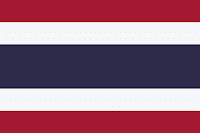* * * * *
Davao, Mindanao Island, Republic of the Philippines
Friday 15th November 1996
Normally Grand Air’s solitary Airbus A300 serviced Francisco Bangoy
International at the City of Davao. On
today however, after performing a round trip to Cagayan, followed by another
round trip to Tacloban, we were assigned a round trip to Davao. Apparently the Airbus was broken. This made for a really long day, and, as the
fates would have it, this was the first and only time I’d ever make this trip.
Davao City sits on the southeast edge of Mindanao Island, adjacent to the Gulf of Davao. From Manila to Davao it’s 522 NM (600.3 SM) using airway B-473, which, cruising southeast at 33,000 feet, took our 737 an hour and a half to travel. The airport sits on the north end of the city, almost on the coastline, while the muddy-brown Davao River, south of it, snakes its way through the city’s heart before flowing into the gulf.
The airport had a single 8,202-foot runway,
running northeast to southwest (050°/230° magnetic), with basic VOR approaches
to both ends.

Since I had never been into Davao International, and my Aussie First Officer had, I gave him the leg. In this way I could sit back and monitor the big picture, looking for hidden traps, as we’d be arriving there at night. I’m happy to report that according to the Jepp instrument charts and plates, all went smoothly as advertised and “my” Aussie did an excellent job getting us on the ground.
Final approach to Runway Five at night. Note the dip in the runway.
In spite of this, due to no
fault of his, the runway proved to be rough as a washboard, pounding our nose
wheel shock strut, and loosening the fillings in our teeth. I had a flash back to the terrible
Russian-constructed runway at Vientiane, Laos.
As for the city, it’s the third most populous in all of the Philippines,
and has the highest murder rate and the second
highest rape rate in the entire country.
I’m
so happy to be spending merely an hour on
the ground here, dear reader. The city
is also nicknamed the "Durian Capital of the Philippines". Pee...you!
On 20th December 1941 the
Japanese began an occupation of the city, which lasted until 1945. Davao, being among the earliest cities to be
occupied by Japanese forces, was immediately fortified as a bastion of Japanese
defense.
Afterward, Davao was then
subjected to extensive bombing by MacArthur’s forces before the Americans
landed at Leyte in October 1944. The ensuing Battle of Davao, towards
the end of World War II, was
one of the longest and bloodiest battles of the Philippine Liberation, and
brought tremendous destruction to the city.
During the post-war period conflicts
inside the city became severe; murders in the streets occurring frequently.
This situation lasted until 1985, when locals formed the vigilante group
"Alsa Masa" (People's Rise) to drive bad elements from Davao. Even so, real social stability in the city didn’t
commence in earnest until Rodrigo Duterte assumed office
as mayor in 1988. Prior to this, the
city held the reputation as the country's murder capital.

Twenty-eight miles to the southwest of Davao City stands Mount Apo, a large, potentially active strato-volcano with an elevation of 9,692 feet above sea level, making it the highest mountain in the Philippine Archipelago.
The mountain is also home to 272 bird species, including the world's largest eagle, the critically endangered Philippine eagle, which is the country’s national bird.
This “puppy” is one monster of a bird, with a length of three feet and a wingspan of seven feet!
It’s also referred to as the Monkey-Eating
Eagle, its chief prey.
* *
* * *



























Comments
Post a Comment